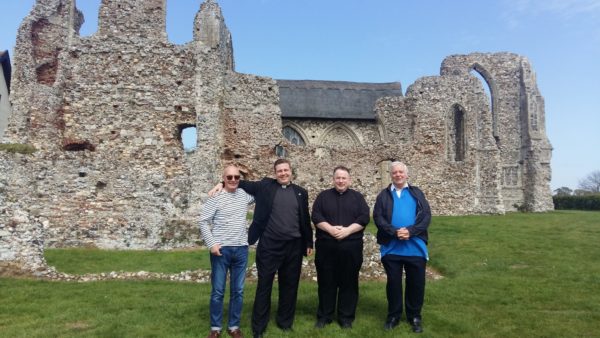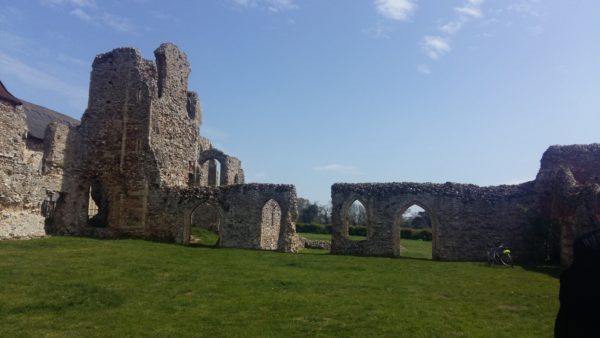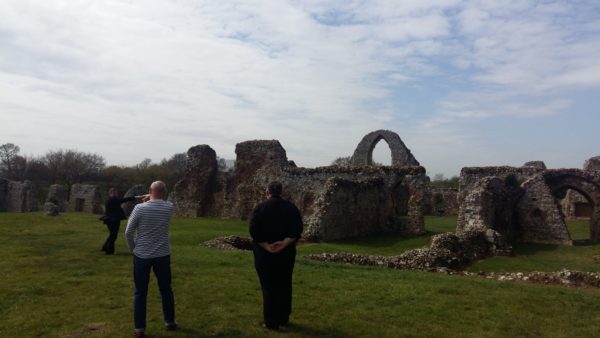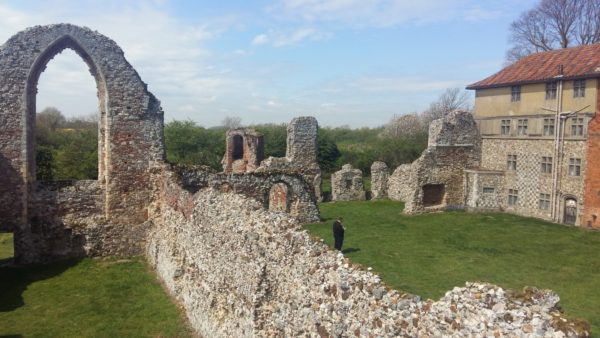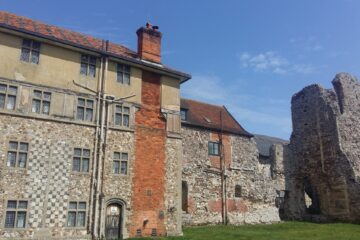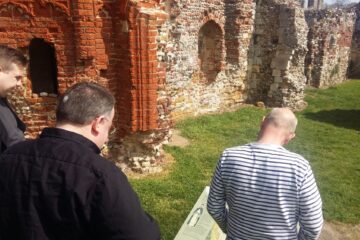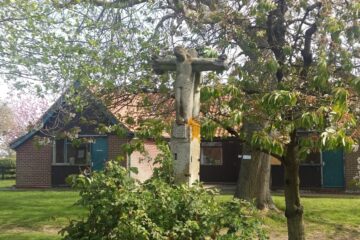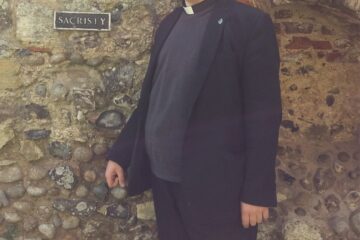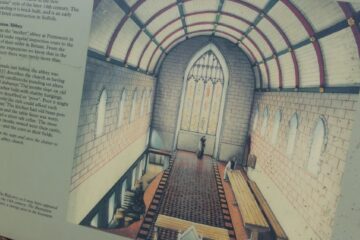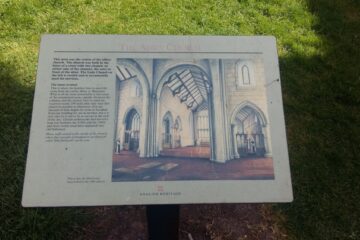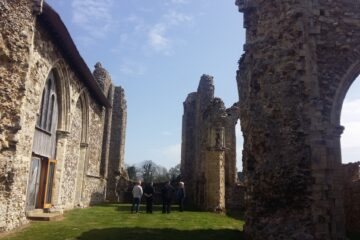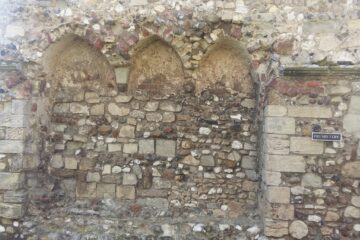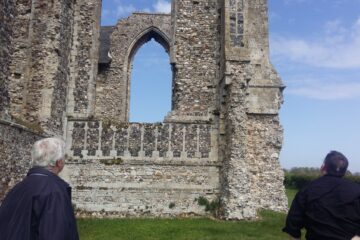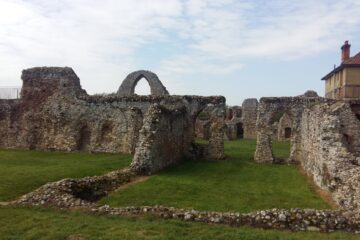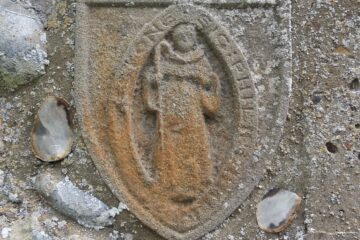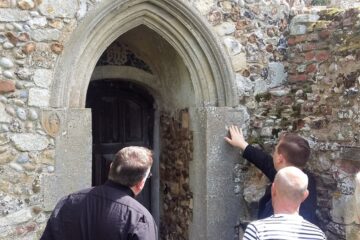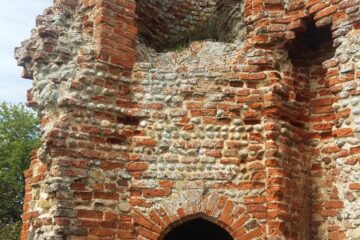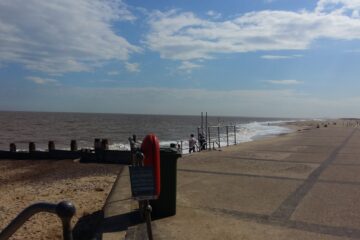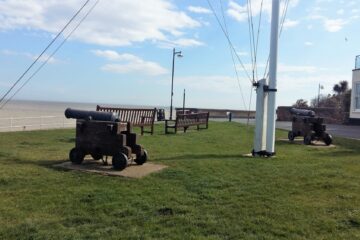A visit to Leiston Abbey
Posted on 25th April 2019 by Br. Gildas
On Easter Wednesday, some members of the canonry visited the impressive ruins of St. Mary's Abbey, Leiston, Suffolk We were joined by an old friend of ours, Fr. Richard Aspen. Leiston Abbey was a Premonstratensian canonry, founded in 1182 by Ranulph de Glanville, re-founded two centuries later, and suppressed under Henry VIII in 1537. It was first situated about two miles to the East – the abbey was moved in the mid-14th century, in response to the corrosive effects of the sea and the marshland on which it was first situated. The new abbey was built through the patronage of Robert de Ufford, Earl of Suffolk.
Leiston survived a destructive fire in 1381, which may have been started by supporters of the Peasants’ Revolt. Richard II granted privileges to the abbey – one of many monarchs to do so. Though Edward II and Edward III imposed burdens on the relatively poor community – requiring them to provide food, accommodation, clothing, horses and grooms for three loyal servants of the crown. This indirect form of taxation meant that the abbey soon faced financial problems and debt.
Like all other Norbertine houses, Leiston was subject to visitations, or “monastic inspections.” Those carried out by the Premonstratensian Bishop Richard Redman (of, consecutively, St. Asaph, Exeter and Ely) are extremely detailed, providing a fascinating account of life among Canons Regular of Prémontré in England. His visitations spanned the last quarter of the 15th century through to the beginning of the 16th century. During his visits to Leiston, Redman was, on the whole, greatly satisfied by the canons and their way of life.
In August 1482, Bishop Redman commended the abbot and other senior canons for having practically halved the abbey’s debt, reducing it from £140 to £80 in four years. During his first visitation on 1478, there were 16 canons in the canonry, including Abbot Richard Dunmow and Prior Robert Covyll, who was also the cellarer. Ten years later, the same number of canons belonged to the abbey, though the abbot was then called Thomas Doket. Robert Covyll, for having broken the monastic silence with two other canons, was censured by Redman. By 1494, there were 12 priests, six novices and Abbot Doket. At the end of the century, and the turn of the 16th century, there were between 15 and 18 members of the canonry, some of whom looked after a number of surrounding parishes – which, in union with Norbertine spirituality, had been the main apostolate of the abbey since its foundation. One of Redman’s last instructions to the canons was that they should provide small windows in the canons’ cells.
Prior to the Dissolution of the Monasteries, the Royal Commissioners complied an inventory of all the abbey’s goods. It listed alabaster statues, as well as all the furnishings in the chapels and on the altars. Among other things, there were three silver gilt chalices and numerous vestments, all of which were old and not very valuable (in monetary terms). The kitchen utensils were listed, as well as the carpets and other furnishings, most of which seemed to be in poor condition. The only things the Commissioners considered to be of any great value were the corn crops, the abbey’s cattle herd, and other livestock. In total, the value of the abbey’s property only amounted to £42 16s 3d – just under £10,000 in today’s money. Leiston was suppressed by the crown and the property given to the Duke of Suffolk in 1537. The last abbot, George Carleton, accepted a pension of £20 per annum, while the remaining canons were left penniless and homeless.
It was very good to visit this former house of our Order, and especially to pray there for our deceased confrères, the former canons of Leiston Abbey. Some of the information on the display boards provided by English Heritage was interesting... Among other things, it seems that the Order of Prémontré was founded earlier than we thought! Descriptions of our Norbertine habit were also rather eccentric. But it was very good to see how well looked after the site is, and how amazingly preserved the ruins are.
After our visit to Leiston, we travelled up the road to the beautiful Suffolk costal town of Southwold. Whilst there we bumped into Fr Roger Spencer, the parish priest, who very kindly showed us his beautiful church, The Sacred Heart. After a restorative pub lunch, we walked along the seafront and enjoyed a delicious (if not substantial) ice-cream… a very suitable and most enjoyable way to celebrate Easter Wednesday!
